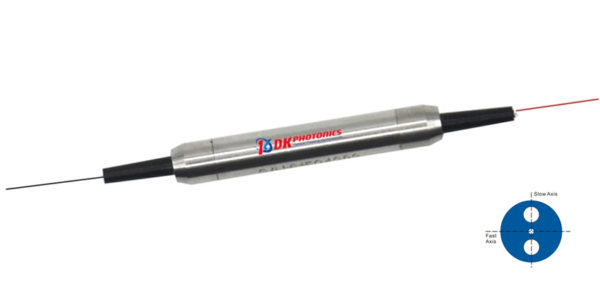When it comes to data transmission and light guiding applications, you can rely on fiber optic cables. They play a vital role in constituting a complete network that is used for transmitting data over long distances at a wide range bandwidth. Fiber optic technology is considered to be ideal for medical, networking, military, electronics, communications, and various other applications.

Though light waves (polarized or unpolarized), can travel through optical fibers with ease, losses are experienced with unpolarized light. Unpolarized light waves travel with significant losses and distortions especially for long distances and this can be detrimental for transmitting information.
To avoid such issues, fiber optic polarizers are used because they can provide the strongest and cleanest output signal.
In this blog, we will explore what these fiber optic polarizers are, what features they have, and where these devices are used.
What is Fiber-Optic Polarizer?
Fiber optic polarizers are small pieces of cable placed in-line with fiber that helps in polarizing the incoming light wave/signal. Fiber with controlled polarization yields output with maximum intensity and bandwidth without disturbing the velocity.
The term that is quite popular with fiber optic technology is in-line polarizer.
In-line polarizers are specially designed to pass the light with specific polarization while blocking the orthogonal polarization. They help in the conversion of unpolarized light into polarized light with a high extinction ratio.
Generally, the standard configuration used for these polarizers is single-mode fiber for input and polarization-maintaining fiber for output.
Features of In-line Polarizers
The salient features that define high quality in-line polarizer are as follows:
- Low insertion loss
- Very small in size
- High extinction ratio
- Excellent reliability
- High power handling ability
- Very affordable
- Superior performance
Available Versions of In-line Polarizers
The two versions of in-line polarizers are available in the market:
Pigtailed In-line Polarizer
This version of in-line polarizer comes with ~1 m long fiber pigtails with a 900 µm tube. The benefit of using pigtail in-line polarizers is that they are more economical and provide the user with added length for use in the fiber optic system.
Bulkhead In-line Polarizer
This in-line polarizer version is widely famous for being rugged. It does not have any pigtails. Since there are no pigtails, this makes polarizer handling easier. There is no need to worry about handling fragile fibers. Besides, it comes with the advantage of removing polarization disturbances caused by pigtails.
Applications of In-line Polarizers
- Analysis of polarization
- Monitoring and control of polarization
- SNR (Signal-to-Noise Ratio) Monitoring
- PMD (Polarization Mode Dispersion) Monitoring
- PER (Polarization Extinction Ratio) Monitoring
- Polarization interferometry
- Spectrum filtering and control
- Fiber laser mode-locking
If you also need in-line polarizer for your application or have any query related to it, contact a reputed online in-line polarizer supplier to ensure high quality or gain insights.